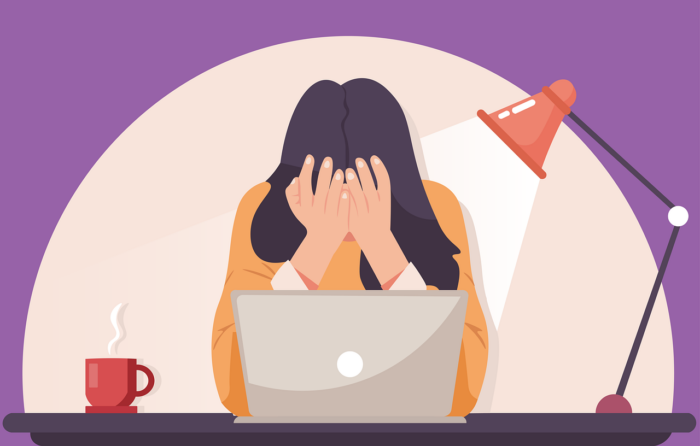
In today’s fast-paced business environment, overstimulation has become an increasingly prevalent issue. With constant notifications, endless meetings, and a barrage of information, employees often find themselves overwhelmed, leading to a significant drain on productivity. This article will guide you on how to address this issue effectively using coaching.
Decoding Overstimulation: A Modern Workplace Challenge

Overstimulation is a state that arises when an individual is subjected to an excessive amount of stimuli, such as noise, light, or information, leading to feelings of being overwhelmed or stressed. This phenomenon, while not exclusive to the workplace, is becoming increasingly prevalent in modern business environments due to a variety of factors.
Unpacking the Sources of Overstimulation in the Workplace
In the modern workplace, overstimulation often stems from several key sources:
- Task Overload: In today’s fast-paced business world, employees often have to juggle multiple tasks at once. This constant balancing act can create a sense of being overwhelmed, contributing to overstimulation.
- Constant Interruptions: Regular interruptions, whether from colleagues, phone calls, or a barrage of digital notifications, can disrupt focus and contribute to a sense of overstimulation. These interruptions fragment the workday, making it difficult for employees to engage in deep, focused work.
- Pressure to Stay Connected: The modern workplace often demands constant availability and responsiveness. This expectation can lead to a relentless influx of information and communication, causing stress and anxiety.
The Modern Workplace: A Breeding Ground for Overstimulation

The contemporary work environment, with its emphasis on multitasking and constant connectivity, is particularly conducive to overstimulation. Here’s why:
- The Burden of Multitasking: In many workplaces, employees are routinely required to manage several tasks at the same time. This incessant task-switching can result in cognitive overload, fostering an environment of disorder and heightened stress levels.
- Instant Responsiveness: The expectation to respond to emails and messages instantly can create a sense of constant pressure, contributing to overstimulation. This pressure to always be “on” can lead to mental fatigue and stress.
- Information Overload: With the vast amount of information available at our fingertips, employees are often inundated with more information than they can process. This deluge of data can lead to feelings of overwhelm and confusion, contributing to overstimulation.
The cumulative effect of these factors can lead to stress, anxiety, and exhaustion, all of which are detrimental to productivity and overall employee well-being. Understanding overstimulation is the first step towards addressing it and creating a healthier, more productive work environment. By recognizing the signs of overstimulation and understanding its sources, businesses can take proactive steps to mitigate its impact and foster a more balanced and focused workplace.
Unraveling the Impact of Overstimulation on Productivity
Overstimulation, a state of being swamped with more information or tasks than one can handle, can significantly undermine an employee’s performance and productivity. The effects of overstimulation are multifaceted, impacting various aspects of an employee’s work life.
Compromised Concentration and Decision-Making
When employees are overwhelmed by stimuli, their cognitive abilities can be severely affected. This includes:
- Concentration: Overstimulation can make it difficult for employees to focus on a single task, as their attention is constantly being pulled in different directions. This lack of focus can lead to decreased efficiency and productivity.
- Decision-Making: Overwhelmed employees may struggle with decision-making. The constant influx of information can cause confusion and indecision, leading to delays and potential mistakes.
Increased Risk of Burnout

Overstimulation doesn’t just affect productivity in the short term. It can also lead to more serious, long-term issues such as burnout. Burnout is a state of chronic physical and emotional exhaustion, characterized by:
- Decreased Productivity: As employees become more exhausted, their productivity levels drop. They may struggle to complete tasks, miss deadlines, or produce work of lower quality.
- Increased Absenteeism: Burnout can also lead to increased absenteeism. Overstimulated employees may take more sick days or be less engaged when they are at work, further impacting productivity.
Link Between Overstimulation and Burnout
Recent studies have highlighted the connection between overstimulation and burnout. Employees who are constantly overwhelmed are more likely to experience burnout, which in turn leads to a significant decrease in productivity. This underscores the importance of addressing overstimulation in the workplace to maintain high levels of productivity and employee well-being.
Harnessing the Power of Coaching to Counter Overstimulation
Coaching has emerged as a powerful tool in helping employees navigate the challenges of overstimulation. A skilled coach can equip employees with effective strategies to manage their workload, enhance their focus, and alleviate stress.
CoachHub: A Digital Solution to Overstimulation
One platform leading the charge in providing digital coaching solutions is CoachHub. This platform connects employees with experienced coaches who can offer personalized strategies to manage overstimulation. Here’s how CoachHub can help:
- Task Prioritization: Coaches can guide employees on how to prioritize tasks effectively, ensuring that they focus on high-impact tasks first and avoid feeling overwhelmed by a long to-do list.
- Setting Boundaries: Coaches can help employees set boundaries, such as designated quiet hours or ‘no meeting’ days, to minimize distractions and maintain focus.
- Mindfulness Techniques: Coaches can teach employees mindfulness techniques to stay focused amidst distractions and manage stress effectively.
Additional Benefits of Coaching
Beyond managing overstimulation, coaching can also help employees develop essential skills and provide emotional support:
- Time Management and Organizational Skills: Coaches can help employees improve their time management and organizational skills, enabling them to handle their workload more efficiently and reduce feelings of overwhelm.
- Emotional Support: Coaches can provide emotional support, helping employees manage stress and prevent burnout. This support can be particularly beneficial for employees dealing with overstimulation, as they may feel isolated or overwhelmed by their experiences.
To sum up, platforms like CoachHub are instrumental in providing the necessary coaching support to employees dealing with overstimulation, thereby promoting a healthier and more productive work environment.
Conclusion: The Way Forward

Addressing overstimulation is crucial for maintaining productivity in today’s business environment. By understanding the impact of overstimulation and implementing coaching strategies, businesses can help their employees manage their workload, reduce stress, and boost productivity.
Incorporating coaching into your business strategy, such as utilizing platforms like CoachHub, can provide your employees with the tools they need to combat overstimulation. By doing so, you not only improve productivity but also create a healthier and more supportive work environment.
To learn more about how coaching can help manage overstimulation and boost productivity, consider reaching out to a professional coaching platform. Remember, a more focused and less stressed workforce is a more productive one. Take the first step towards combating overstimulation today.
In the future of work, proactive measures against overstimulation will be more important than ever. Start now, and ensure your team is equipped to handle the challenges of the modern workplace.








